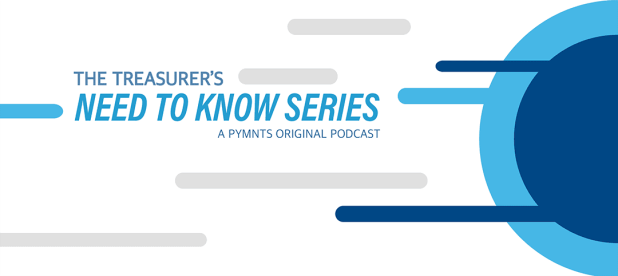Citi On Treasury’s Real-Time Reality

Treasury management is becoming a job done in real time, as business is done across borders and time zones. Ron Chakravarti, Treasury Advisory Group head at Citi, tells Karen Webster that gaining insight into how much cash is there — and where it is — requires more than just infrastructure in an “always on” economy.
Not all that long ago, treasurers would take stock of cash positions at the start of the day … to the best that they could, since some banks might not report positions daily. Maybe not even weekly.
Liquidity and cash investment plans would be made by 10 a.m.
Business ended at 5 p.m. and wrapped up for the week on Fridays.
Things have changed of course, because the very nature of payments has changed, and is changing. Batch processing, increasingly, is giving way to real-time payments and processing throughout the day. As a result, treasurers must grapple with the notion (and the needs) of cash crossing accounts many times a day. Cash management becomes a continuous process, throughout the business day.
And now we are verging toward a fully real-time world. Knowing where and how much cash there is across various legal entities, countries and currencies is crucial.
It becomes imperative not just to have access to real-time payments as an actual payment option (and to, perhaps, finally kill the paper check) but to also have access to real-time information and automation.
To that end, said Ron Chakravarti, Treasury Advisory Group head at Citi, the role of the treasury management team in optimizing cash on a day-to-day basis is changing as real-time operations (and payments) increasingly command attention.
Putting Change in Context
As Chakravarti told Karen Webster in a PYMNTS podcast in the “Treasurer’s Need to Know” series, there are several forces at work, impacting businesses and also the ways that treasurers and their teams manage cash, liquidity and foreign exchange.
On a grand scale, those forces include uncertainties over trade (illustrated by ongoing tariff spats), and even changes in tax policies across different regions across the globe, all of which are shifting supply chains.
There’s secular change afoot too, he noted, rooted in just how we buy and sell, and the infrastructure that underpins that commerce in the first place. The growth in eCommerce transcends all industry verticals. Technology is driving the change as suppliers, buyers and end customers are all starting to interact through real-time interfaces and application programming interfaces (APIs). As far as real-time payments are concerned, this is setting the stage — and of course there is no shortage of instant payment schemes proliferating around the world.
“All of this is leading toward an inevitable shift to an always-on economy,” he told Webster, “though we are at the early stages of that shift.”
Indeed, the broader embrace of real-time payments, and real-time management of treasury functions, will take a little time, as savvy observers have prognosticated.
But as this happens, truly managing cash in real time will require a shift from just knowing how much cash there is to predicting how much there will be … and automating decisions on how and when to take action.
“By and large, we are not yet in a ‘world of real-time treasury’,” Chakravarti said. Many companies, even enterprises multinational in scope, are still putting systems in place to cement visibility and control of cash that spans multiple jurisdictions.
Think of it as a curve, perhaps one that will steepen rapidly, in real-time treasury adoption, he said, driven by changes in the way businesses and firms interact with one another in a more instant/real-time manner.
(Citi’s own efforts to streamline treasury among its client base have been gaining traction. As reported at the end of last month, since the launch of APIs through CitiConnect, Citi has estimated that its corporate treasury APIs and platforms have processed more than $26 billion for enterprise clients.)
As Chakravarti noted in his discussion with Webster, the impact for treasury of shift to real time depends on the actual types of transaction at hand.
“When companies start paying consumers things like their claims payments, that starts changing things a bit, but it’s still not very big in terms of how much money is moving around,” he told Webster. “As more businesses start selling to consumers directly, instead of through distributors, and start collecting directly, that starts to get ‘big’ … it’s a large chunk of money. And when businesses start transacting with each other, well, that’s very big.”
All of this means that the needle will move from C2C to B2C to B2B along the continuum of real time payments adoption, with ripple effects on cash management.
We’ll be moving to a realm where the treasurer’s week does not end at 5 p.m. on Friday, he said. Money will move during the weekend, as suppliers get paid or firms collect money from their customers. He pointed to the Treasury Diagnostics survey, which showed that digitization is driving change in companies’ business models, and that treasurers see digitization within the treasury department as critical to the transformation they need to make.
The Challenges
In treasurers getting ready for the real-time world, budgets are a challenge and so are people skills, said Chakravarti.
But, as digitization changes business models, investment is critical, with an eye toward the impact of real-time payments on treasury management.
Budgeting for those investments can be a challenge, noted Webster, particularly if they do not wind up boosting a firm’s top line. Or if it’s not clear how they will.
In terms of getting that funding, said Chakravarti, the treasurer needs to be able to articulate to the CFO why financial processes are changing, along with the business, and also needs to work in tandem with the technology staff to get the right infrastructure in place.
Staff involved need to become knowledgeable about how financial services and cash management are changing.
Against the inevitability of real time, he said, one question that frequently comes up from treasurers focuses on how they can prioritize their departmental transition.
The answer, Chakravarti said, depends on where those firms are in their journey.
“You can break it into layers,” he said. As the base, treasury needs to complete the journey toward efficiency, making sure that functions such as liquidity management and accounts receivable and payable are centralized and streamlined through technology. Companies that are largely there should focus on the next layer, building to what he termed “smart treasury” — connecting data to machine learning and artificial intelligence (AI), that enables better decision-making, moving from analytics to reliable predictions. And equipped with that, toward high automation of operational treasury. All of this prepares us for the third layer, which comes as we move toward a fully integrated treasury operation, operating seamlessly with the business, supply chains and banks with high security.
“If we go from a world where value is exchanged on an end-of-day basis to, perhaps, a future of this happening on a minute-by-minute basis,” he told Webster, “that agility in thinking about finance and agility in thinking about technology is as important as getting the budget.”
